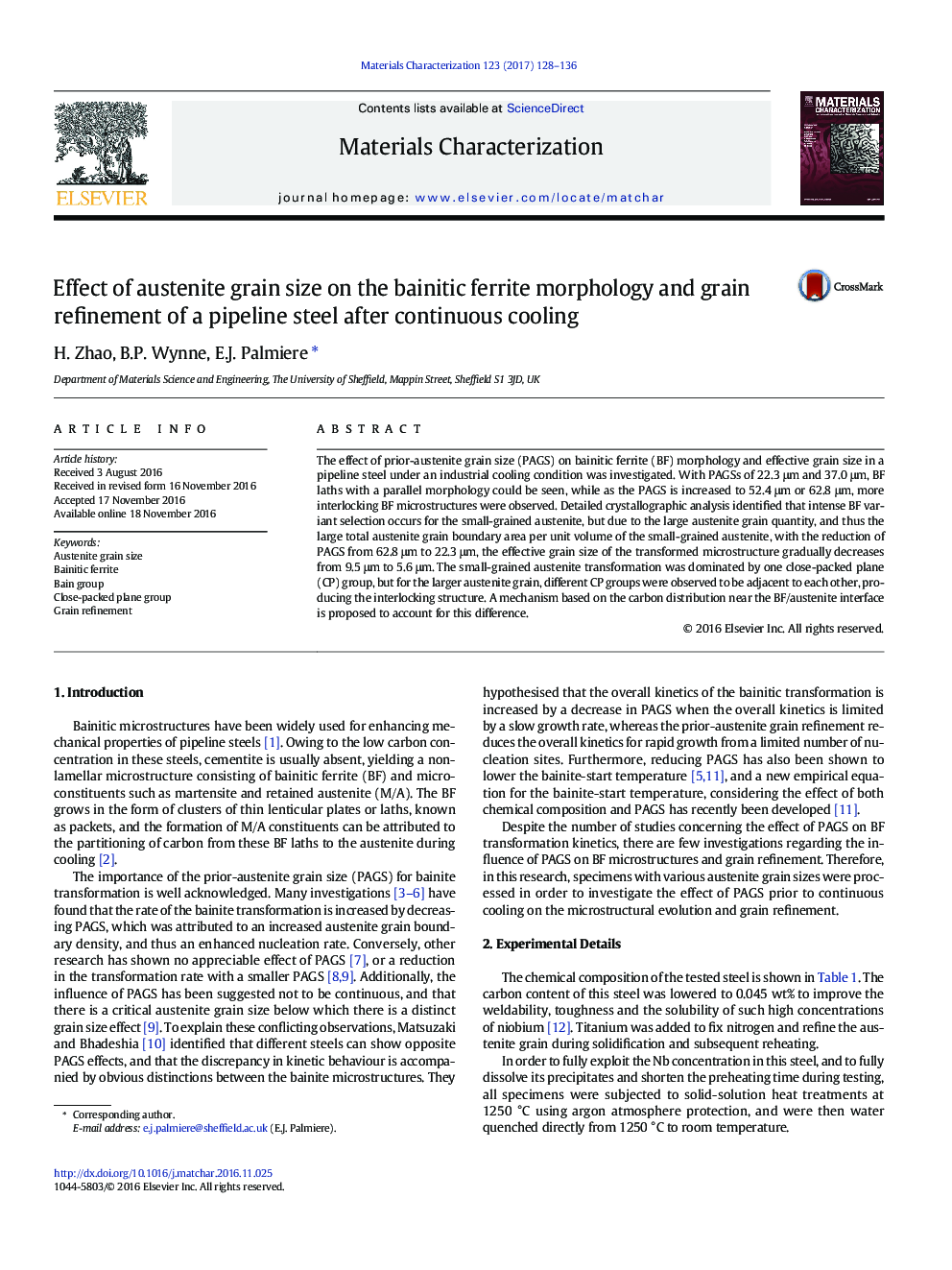| Article ID | Journal | Published Year | Pages | File Type |
|---|---|---|---|---|
| 5454949 | Materials Characterization | 2017 | 9 Pages |
Abstract
The effect of prior-austenite grain size (PAGS) on bainitic ferrite (BF) morphology and effective grain size in a pipeline steel under an industrial cooling condition was investigated. With PAGSs of 22.3 μm and 37.0 μm, BF laths with a parallel morphology could be seen, while as the PAGS is increased to 52.4 μm or 62.8 μm, more interlocking BF microstructures were observed. Detailed crystallographic analysis identified that intense BF variant selection occurs for the small-grained austenite, but due to the large austenite grain quantity, and thus the large total austenite grain boundary area per unit volume of the small-grained austenite, with the reduction of PAGS from 62.8 μm to 22.3 μm, the effective grain size of the transformed microstructure gradually decreases from 9.5 μm to 5.6 μm. The small-grained austenite transformation was dominated by one close-packed plane (CP) group, but for the larger austenite grain, different CP groups were observed to be adjacent to each other, producing the interlocking structure. A mechanism based on the carbon distribution near the BF/austenite interface is proposed to account for this difference.
Related Topics
Physical Sciences and Engineering
Materials Science
Materials Science (General)
Authors
H. Zhao, B.P. Wynne, E.J. Palmiere,
